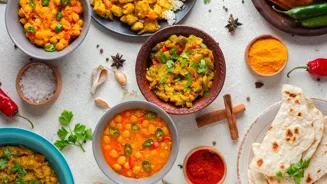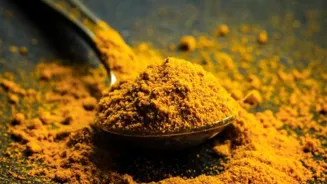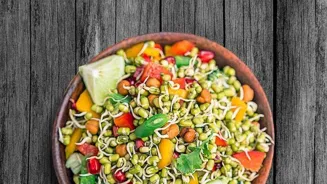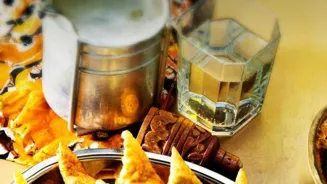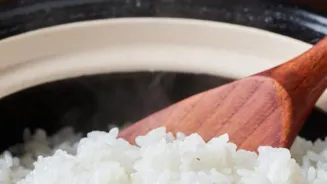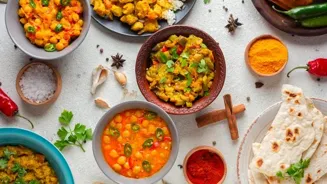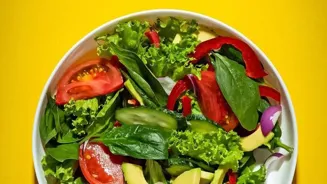Discover the art of crafting a balanced Indian thali - a symphony of flavors nourishing body and soul. Delve into the culinary journey on one plate
The Indian thali, a culinary experience presented on a single
platter, is much more than just a meal; it's a complete and balanced nutritional journey.
This vibrant assortment of dishes, carefully curated to cater to all six tastes – sweet, sour, salty, bitter, pungent, and astringent – showcases the regional diversity and the age-old wisdom of Indian cuisine.
Learning to assemble a thali is learning the art of mindful eating and ensuring you get all the nutrients your body needs in one sitting. It's about creating harmony on a plate, a symphony of flavors that nourish both body and soul.
Let's delve into the intricacies of crafting the perfect vegetarian Indian thali.
Thali foundation: rice or roti with dal for energy & protein
The foundation of any good thali is a wholesome grain, typically rice or roti. This provides the essential carbohydrates for energy. Rice, especially varieties like brown rice or basmati, offers sustained energy release and is often preferred in South Indian thalis.
Roti, made from whole wheat flour, is a staple in North Indian thalis and provides fiber, aiding in digestion. Including a good source of carbohydrates is crucial for feeling full and satisfied after your meal. Alongside the grain, a lentil dish, or dal, is a must-have.
Various dals like toor dal, moong dal, or chana dal offer a plethora of protein and fiber. Dhals are amazing and offer wholesome benefits to one's self.
Vegetables add variety and nutrition to a thali meal
Next, comes the inclusion of vegetables. A thali should ideally feature two or three different vegetable preparations, each cooked in a unique style. One could be a dry vegetable dish, like aloo gobi (potato and cauliflower) or bhindi masala (okra with spices), offering a textural contrast.
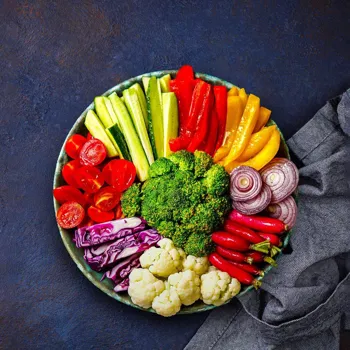
The other could be a vegetable curry, cooked in a flavorful gravy, such as baingan bharta (smoked eggplant mash) or kaddu ki sabzi (pumpkin curry). The combination of different vegetables ensures a wide range of vitamins, minerals, and antioxidants.
Vegetables add colour, texture, and flavour to the thali, making it visually appealing and nutritionally complete.
Inclusion of accompaniments enhances thali dining experience
A crucial, but often overlooked, element of the thali is the inclusion of accompaniments. These are the smaller dishes that add bursts of flavor and aid in digestion.
These often include a cooling raita (yogurt dip) to soothe the palate, a tangy pickle to stimulate the appetite, and a crunchy papad to add a satisfying crunch. These side dishes complements the main items and enhances the overall eating experience.
A small portion of salad, such as a simple cucumber and tomato salad, can also be included to provide fresh enzymes and fiber. These seemingly minor additions play a vital role in making the thali a holistic meal.
Indian meals need a sweet ending for balance and satisfaction
No Indian meal is complete without a touch of sweetness. A small serving of dessert, such as a piece of barfi, a spoonful of kheer (rice pudding), or even a simple date, is a customary way to end the thali.
The sweetness not only satisfies the sweet cravings but also helps in balancing the overall taste profile of the meal. It is best to opt for desserts made with natural sweeteners, like jaggery or dates, rather than refined sugar.
A small portion of sweet dish at the end provides a sense of completion and contentment.
Indian thali: adaptable, customizable meal celebrating heritage and balance of nutrients
The beauty of the Indian thali lies in its adaptability. You can customize it to your individual preferences and dietary needs. If you are watching your weight, you can reduce the portion size of the rice or roti and increase the quantity of vegetables and dal.
If you have specific allergies or intolerances, you can easily substitute ingredients. The key is to maintain the balance of nutrients and flavors. The goal is to create a meal that is both nourishing and satisfying.
The thali is a celebration of Indian culinary heritage, a testament to the power of food to nourish and heal. It is a complete experience on a plate.
AI Generated Content. Glance/InMobi shall have no liability for the content